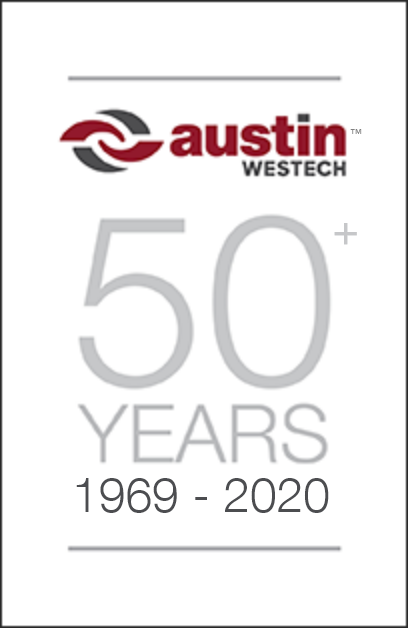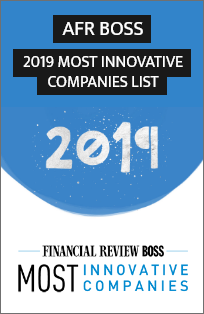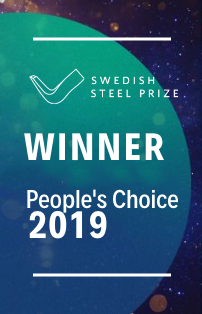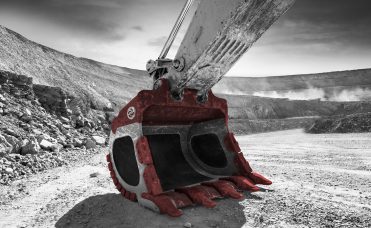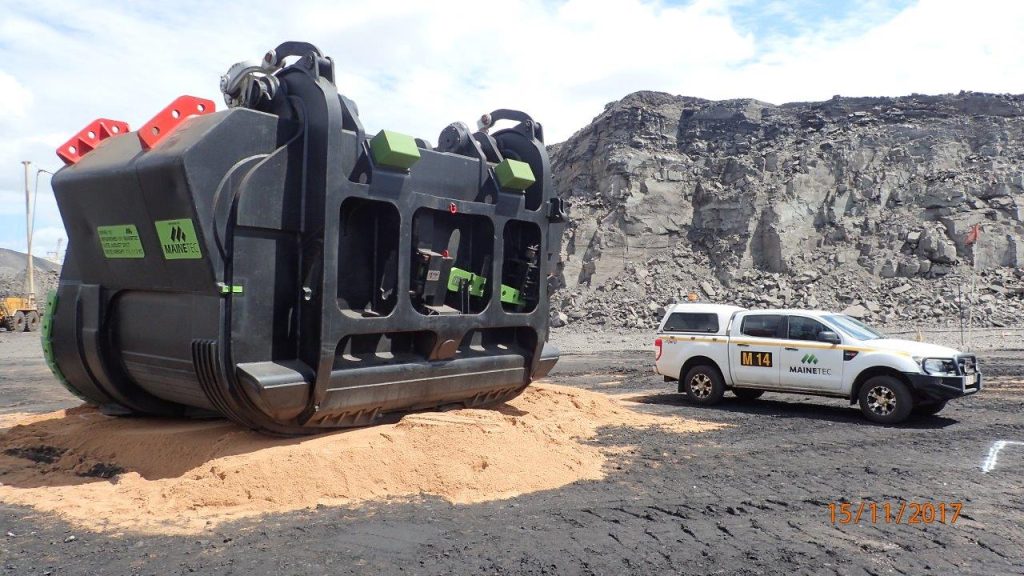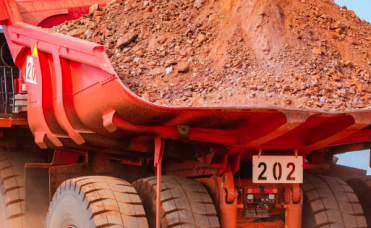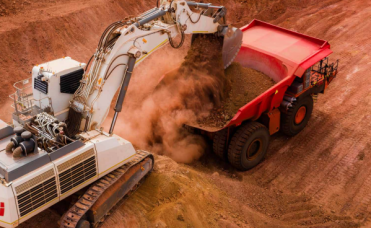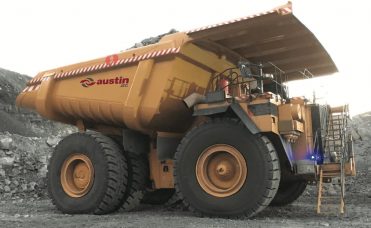-
Austin, the global mining bucket specialist
April 19th, 2024 | by excitemediaWith an updated mining bucket range and a new dedicated bucket facility in Australia, Austin is cementing itself as global leader in bucket design, engineering, and manufacture.
Integrating Australian bucket manufacturer, Mainetec, into the business, Austin now has one of the largest bucket ranges on the market, offering cutting edge, lightweight buckets with faster loading and more payload delivery for its mining customers.
Complementing Mainetec’s operations in Queensland, on Australia’s East Coast, Austin has transformed its Perth facility on Australia’s West Coast into a large, dedicated bucket specialist centre. The centre is the largest bucket build and rebuild facility in Western Australia, servicing Austin’s long term mining clients.
With Austin’s key manufacturing facility in Batam, Indonesia also able to assist with bucket manufacture, Austin has the capacity and capability to design, manufacture and deliver to customers on time anywhere in the world.
The increased capacity and interest in the new product range has driven bucket sales to record levels, with Austin now producing and delivering more than three times the buckets per month than it was per year back in 2021. Austin has also invested in initiatives to reduce manufacturing and rebuild turnaround times to support operational efficiencies on customer mine sites.
Austin’s engineering team draws on more than forty years of bucket engineering experience and investment in design to create customised buckets. From High Performance (HP) lightweight buckets through to heavy-duty armoured buckets, Austin can custom engineer buckets to suit any application.
Austin’s engineering teams deliver full customisation for payload, wear and ground conditions including use of any type of customer preferred GET system and proprietary wear blocks with high wear facings.
Austin’s customers can also access precise information on the condition of their trays and buckets through Austin’s Mainetrack asset management software. Following an initial input of equipment data, customers can easily retrieve information about equipment wear through the Mainetrack app.
The system will show wear over time and, importantly, predicts when equipment will hit pre-set wear limits so customers can schedule rebuilds or replacements.
Austin will also send product support teams to site for operation and servicing support for Mainetrack software.
Austin’s dipper buckets are fitted with the latest version of the company’s iTrip proprietary door latching and control system. Already widely used in Australia, iTrip dramatically reduces maintenance intervals and increases the service life of the components. The system has proven to increase the standard dipper service life between overhauls by up to 18 months.
In addition, Austin provides its customers with a dedicated portal, allowing clients to track the progress and delivery of their new buckets, trays and rebuilds, providing assurance and confidence to operational teams.
International aspirations
With Australia as its bucket design hub, and supported by Austin’s global operations, Austin can send buckets to clients anywhere in the world. Austin builds and rebuild dipper buckets in Australia (Mainetec), Indonesia, Chile, and the USA.
A dipper bucket for a USA-based customer is already under construction in Batam and due for delivery in August 2024. The ability to export its own-designed and manufactured buckets globally has positioned Austin as a market leader, with increased market opportunities emerging across the
USA and South America.“Our mining buckets are delivering efficiencies for our mining clients in Australia and now around the globe, and they’re becoming a very important part of our business. We’ve created a bucket centre of excellence in Australia, building on our forty years of design and experience to deliver the highest quality buckets on the market.”
Austin Engineering Managing Director, David Singleton -
Austin’s Lightest-Ever Truck Tray Launched
June 29th, 2023 | by excitemediaGlobal mining products business Austin Engineering Ltd has just launched its High Performance Truck Tray (HPT) range to the market.
The HPT is the Company’s lightest tray ever produced and promises a suite of improved efficiencies and advantages for Austin’s mining customers.
Perth-based Austin partners with mining companies, contractors and equipment manufacturers to create engineering solutions such as truck bodies, buckets and water tanks for multi-commodity underground and open cut operations.
It is the world leader in customised design, build and sustainment of mine site haul trucks trays, delivering trays to mining clients from its bases across Asia-Pacific, North and South America. It currently delivers around 600 truck bodies annually with capabilities and functions to suit multiple commodities and terrains.
Austin has made considerable investment in new products in the last 12 months, with its engineering teams using the latest innovation and technology to improve safety, productivity and reduce environmental footprint. The investment has led to the creation of the HPT and the light weight and linerless JEC High Performance (HP Series) bucket range.
The key features of Austin’s HPT design have improved the overall strength of the tray, weight, stability, and efficiency of the product with more payload and less carryback. These have been achieved through adjustments and reconfigurations to the floor styling, load height, ground clearance, side support, and tray side and front walls.
On payload advantage, Austin estimates 10 – 15 per cent mass savings over comparable Austin designs, significantly improving productivity, and potentially fuel usage, for the end user.
All of Austin’s products are design-flexible, fully customisable and compliant. The HPT can be adapted to suit any mine-specific application and OEM make or model. Interchangeability also exists in regard to standard OEM componentry and machine attachment.
“Austin is known and recognised for its lightweight truck trays, but this is our lightest tray yet, and we’re extremely proud of our engineering and manufacturing teams on this design to meet the requirements of our customers. One of the biggest advantages is the HPT’s extra payload capabilities.
One of our major customers reported 7.3 tonnes more payload per journey. The customer calculated that it could carry $2.8 million dollars of ore per truck tray, per year, which is a significant impact efficiency and dollars-wise for mining companies,” said Austin Managing Director and CEO, David Singleton.
While Austin reported a lift in both tray and bucket sales in full year 2022, the new product ranges are expected to boost sales globally. Austin’s customer base will be broadened through the recent acquisition of private Australian mining equipment manufacturer, Mainetec Pty Ltd, which has added the Hulk range of high performance mining buckets to complement its JEC HP range.
First HPT trays in operation by end of month
The first production run of HPTs is now commencing manufacturing in Austin’s major Kewdale facility in Perth.
The first trays will be being fitted to Komatsu trucks before delivery to customer mine sites and into operation by the end of November 2022.
Maximising fleet capabilities
For more than half a century, Austin has been designing and manufacturing loading and hauling solutions for the mining industry. Its major manufacturing sites in Australia, Indonesia, North America and South America produce Austin’s major haul truck body brands including Westech, Westech PREMIER, JEC, JEC-LD and the popular ULTIMA tray range.
-
Take a load off your mind
June 22nd, 2023 | by excitemediaIn a complex and fast-changing space like the world mining sector, there is a single common understanding: no two mine sites or operations are the same.
The challenges, though not dissimilar, each require a tailored and bespoke solution — and no truer example of this is the shifts underway in the development of lightweight OEM attachments.
The once heavyweight champion of this space – both literally and otherwise – was a kind of OEM standard, one-size-fits-all approach.
Now though, it’s a lightweight approach to truck bodies and OEM attachments that has muscled in on a big world market.
Leading the charge is Austin Engineering.
Truck bodies designed and built for purpose mechanical engineers like Deon Wessels have been a part of this shift. He and Executive General Manager, Paul Clarke, have helped pave the way for a move away from off-the-shelf, usually heavyweight, long-lifespan OEM options.
The new way, as they have seen it, is in the form of site-specific, usually lighter weight, shorter lifespan alternatives.
Greater consideration is being given to mine sites, their needs, and the required lifespan of equipment. This takes into account whether operations are looking to a longer lifespan, higher maintenance approach (which generally comes with the heavier body options); or a high capital, low maintenance approach offered by lightweight body options.
Essentially, this means operations can maintain and upkeep bodies which might have a lifespan of up to 60,000 hours, or they can go with a lighter option with a greater load-carrying capacity, with a shorter lifespan (say 24,000 hours) where the life of mine may be between four to eight years.
Options still exist to repair or refurbish lighter truck bodies, but often they are simply replaced at the end of their duty cycle.
There are many paths open to the mining customer in order to tailor a truck body to both their operational and financial requirements.
As with most innovations, what this gives those in the market is that most coveted of commodities: choice.
Deon has a bit of a laugh when he compares a high payload, surface mining truck body to a good old garden wheelbarrow.
“They both carry dirt and other material from one place to another, but there is really a lot of science behind it than what meets the eye,” Deon said.
Deon is part of the large global footprint of the Austin Engineering group. Under the organisation’s ‘One Austin’ philosophy, he is working with a single-world team that is at the cutting edge, innovating world-class solutions for the biggest client share of its kind in the world.
“The market is focussed toward a lighter construction with delivery of a higher payload,” Deon said.
“That means we look to carry more at the lightest possible body weight without hindering design intent.”
Paul, too, is behind the cutting edge of the science and innovation, which has underpinned the solutions-based culture of excellence that Austin Engineering — and their brands, JEC, Westech, and Ultima — adheres to.
“Austin is the global leader,” Paul said.
“We have more truck bodies in the space across the world than any of our other non-OEM competitors.”
Long History
Austin Engineering might be the leader in the truck body and OEM truck space — and it’s not by accident.
Starting in 1982, originally, as a family-run business in Brisbane without even a hint of involvement in the mining industry, Austin was bought in 2003 by a group of investors under the banner of Western Australia Metals and was publicly listed on the Australian Stock Exchange in 2004. Between 2006 and 2013, the business expanded throughout Australia, Asia and North and South America.
In 2018, after a couple of years of business consolidation and the integration of all global operations into a single business model, Austin rebranded, and it is now the leader of manufacturing, design and solution delivery in its sector of the global mining industry.
A key aspect of this was the opportunity to acquire JEC (Perth-based Johns Engineering and Cranes).
Already, they had experience and design in buckets, water tankers and other mining attachments, but they did not have a truck body design. The business was built to the designs of the likes of Caterpillar and Komatsu, but it was shortly after that that Westech was acquired.
With that came the scope and capacity to develop Austin’s own truck body design.
“It was quite a way-out concept at that point — very curved shaped and different — that took us down a very different path,” Paul said.
The movement away from heavier to lighter truck body designs — with an eye to deliver higher performance, higher production and, therefore, higher payload for clients — was a game-changer.
“We very much led the way to converging the more conservative mining industry to going to a lighter-weight truck body,” Paul said.
That innovative approach attracted the attention of large blue-chip miners, and Austin would soon flush out and re-populate mining companies’ fleets across the Pilbara.
With new innovation comes the compulsion — and market imperative — for others to follow suit.
While others in the space have, as Paul puts it, ‘been nipping at Austin’s heels’, the business’ commitment to innovation and bespoke, tailored solutions for clients all over the world has enabled their leadership to hold.
“We have seen a lot of competition in this space coming up with different designs and concepts, but we have continued to innovate along the way,” he said.
“Austin still have the original Westech and JEC range of bodies within our arsenal of body options, brands that have proven the test of time and are etched forever in our company DNA, one that is valued as the cornerstone and continues to evolve.”
Wide Range of Truck Bodies
Add to that, the innovative Ultima range, and the Austin Engineering stable boasts a range of products that are designed, developed, and tailored for customers using world-standard modelling and analysis systems. Indeed, that is one of the things that has cemented Austin’s sector leadership while raising the bar industry-wide.
The timing has been good as well.
Both men cite the need Austin Engineering met within the world market to respond to the individual, site-by-site requirements around mine location, ore type, load capacity, tailored design and the lifespan of the mine.
Increasingly, specifically tailored attachments are being procured that best suit the characteristics of a site and the material being loaded — all with the view to maximise load and minimise risks, roadblocks and blockers.
Everything from safety to operation, payload to even dust is being factored into the development of Austin’s solutions.
Application Specific
Such is the commitment that in 2011, Austin’s Westech T282C Flow Control Body, which was manufactured for use with a Liebherr T282C Ultra Class haul truck chassis in North America, was awarded a Guinness World Record for Largest Truck Body.
The truck held 447.3t of coal and empties. At the time, it was the largest body by volume — and the payload alone was close to 300t (of lightweight coal).
The Westech Flow Control Body was developed to essentially tip and allow the coal to metre out the back without a sudden flow. This enables a gradual breakaway of the materials (coal versus dirt and overburden material, for example), to flow evenly — shearing away in layers rather than a single mass. This then reduces the incidence of crushers choking under a sudden flow of material — and it dramatically reduces dust creation on site.
This approach can then be further calibrated, with floor tilts, and rotations to meet the needs presented by different materials and their respective properties and characteristics.
Another example of a tailored solution occurred in the haulage of tar sands in Canada.
The inclusion of a taper in the tray body (opening to the rear) and the use of a patented system to heat the load using the truck’s own exhaust gases, allowed the oil sand (which usually resembles a loaf of bread in the freezing climate), to flow out of the tray easily without jamming.
3D Modelling and Digital Twinning
Austin Engineering’s commitment to innovation is even more evident through the extensive use of 3D modelling and material flow dynamic analysis software.
Packages such as EDEM and ANSYS are staples in the development of innovations and solutions — improving accuracy and saving time and money but also enabling faster delivery of custom tray designs to the customer.
Using tools such as three-dimensional modelling to basically “build” the truck bodies virtually means bucketloads of money and time saved in building, testing, and rebuilding scaled or in-field prototypes.
Both Deon and Paul said even in the most unique of circumstances, where there are acute and intricate factors to be accounted for, the use of this modelling can enable refined solutions that can be tested virtually, but still practically and accurately.
The modelling also means much —if not all — possible applications and conditions can be assessed and mitigated prior to final physical development.
Non-Linear Solutions
And as for that quip about the wheelbarrow? Deon said no solution is ever linear: there is always much that is analysed, and state-of-the-art simulation and analysis tools enable the engineering of a solution.
That means finding a solution that accounts for everything. From the type, flow, stickiness, range of fragmentation and angle of repose of the material being hauled, to the way the material interacts with the tray or bucket when it is being loaded or dumped. I.e. what forces are generated when designing a truck body or bucket that must remain within the OEM’s envelope and limits?
This simulation enables the team to factor in all relevant site and situational data — from material type, SG, moisture and movement characteristics to site conditions.
In many cases, an actual video of a current truck body tipping an actual load on site is the perfect place to start.
From this video footage, the Austin Engineering team can create a digital twin of the truck and simulate its tipping time and the characteristics of the load as it shears and falls. With close representation of the actual conditions faced on site, the design team have an accurate benchmark to test the reactions of the simulated load in order to design the product.
In this way, they can be confident that the design will be accurate in the real world when being translated into steel.
“We use world-class software to carefully analyse the original situation, and from that, we can develop the exact solutions, taking in each of these variables, for our customers,” Deon said.
“More and more competitors are coming into the business now with new designs — but they don’t have the miles on those designs,” Paul added.
“We continue to innovate to stay ahead of the curve.
“We are a solutions provider and not just a manufacturer.”
Both men agree it is years of experience, an investment in innovation, and the organisation’s One Austin approach, which sees them invested in the contribution of the entire Austin team, that enables Austin Engineering to maintain its world-leading status.
And clearly, it is a design — and a philosophy — that is engineered to work in a changing and dynamic world market.
While Austin is at the forefront, with the largest world market share, there are organisations all over the world working to uncover, develop and then market similar solutions — across the entire spectrum of innovation in mining and resources. Like anything in mining, the possibilities are rich and run deep.
-
What mining equipment is used in surface mining?
March 14th, 2023 | by excitemediaAs a leading designer and manufacturer of mining equipment in Australia and across the world, Austin Engineering is proud of the part our company plays in global mining operations.
Whether you are a mining professional, a contractor, or you would simply like to know more about the equipment and machinery used in the mining industry, this article has been created to take you through the different equipment used in surface mining.
Surface mining & underground mining operations: what is the difference?
Surface mining and underground mining are two relatively obvious terms. Surface mining refers to mining operations that take place on ground level.
Underground mining refers to mining operations that are completed underground.
Surface mining is a more common practice and more efficient than underground mining, however, it is important to note that these are different processes.
Its popularity derives from its simplicity. While surface mining is not a simple process, it is far easier to coordinate and offers greater flexibility to mining and resource teams.
Underground mining comes with increased safety hazards, more rigid materials to cut and mine through, and thus, more intensive mining equipment, and importantly, equipment that does not emit fumes.
How does underground mining equipment differ from surface mining?
We touched on this, but due to the confined spaces within underground mines, it is important that underground mining equipment is small and agile and does not emit fumes. This way, it can manoeuvre within that space and does not become a safety hazard for the miners in the space.
The more rigid materials that are typically found in underground mines demand heavy-duty mining equipment that has the ability to cut through hard rock.
As there are so many different mining methods available in surface mining, due to its above-ground nature, there are many more tools and machines available to use.
Blast mining is a far more common practice in surface mining. This is because there are fewer risks of accidents when this practice is used above ground.
Underground mining will also utilise blasting tools. It is simply less common due to the associated hazards.
There is plenty of mining equipment that is used in both surface mining and underground mining.
Mining Trucks
Mining trucks, such as dump trucks, are utilised across a variety of surface and underground mining operations.
These types of mining machines are essential for the shifting of soil, earth, and minerals on mining sites and create much more efficient processes for mining companies.
Roof Bolters
Roof bolters are typically used in underground mining; however, if you are blast mining on a surface with high walls, these may still be necessary.
These are designed to prevent and protect teams against the risk of mine roofs and tall walls caving in.Crushing Equipment
By crushing iron ore and other minerals into smaller pieces, miners both underground and at surface level can easily move and sort through these materials.Analysis Tools
All mining operations will depend on a suite of analysis tools to ensure they have acquired the correct resources, at the correct size and weight, and ensure they are sent to the correct location.
These analysis tools include weight feeders, crossbelt analysers, and flow measurement tools.What mining equipment is used in surface mines?
Surface mining is a mining operation that is used all over the world. It is an operation that utilises a variety of mining machinery and equipment.
In Australia, a majority of these mining sites will be acquiring iron ore, but a variety of minerals are mined across the world using surface mining techniques.
With great flexibility, surface mining incorporates a variety of techniques. These include open-pit mining, hydraulic mining, quarrying, auger mining, heap leaching, and many more.
That flexibility and breadth of techniques mean that there is a large range of surface mining equipment available for use.
Tyre Handlers
Tyre handlers, particularly when they’re designed and produced by Austin Engineering, are excellent on-site tools in surface mining and underground mining applications.
These allow you to better handle tyres on large earthmoving equipment. Austin Engineering’s tyre handlers are three-armed and are an innovative solution for your operations.These eliminate the requirement of conventional pad rotation and can be used with smaller and more compact earthmoving machinery.Surface Mining-Specific Dump Truck Bodies
Dump trucks are essential for all mining operations. Particularly in surface mining, these trucks allow you to move large quantities of ore or overburden.
Dump trucks will also be responsible for shifting any mined materials or minerals to their next destination, whether that is a material processing site or an alternative location.The team at Austin Engineering produce innovative, custom dump truck bodies for mining companies that want to maximise their fleet capabilities.
Austin Engineering’s dump truck bodies are built tough and built to last. these are tested across a variety of harsh conditions in the mining sector.
Hydraulic Mining Shovels
Hydraulic mining shovels, also known as hydraulic excavators, dig through and remove materials from dig sites. These machines are capable of digging through and removing tonnes of materials from these sites.These machines are larger and thus are typically utilised in open pit mining or surface mining.
Continuous Mining Machines
In surface mining and strip mining, continuous mining equipment is an innovative piece of equipment that uses steel and tungsten cutting tools to cut through soft materials.
As suggested by its name, this machine continuously and autonomously cut through these materials, making it a popular choice in coal mining.Electric Rope Shovels
Electric rope shovels are similar to hydraulic shovels, however, these machines use electricity instead of diesel.It eliminates the emission of toxic fumes, offering mine workers a safer environment.Mining Dozers
Mining dozers are a standard piece of machinery used in surface mining applications.
These can utilise tyres or tracks, depending on your surface’s terrain and can be equipped with various attachments.Dozers are frequently used on mining sites to level surfaces and shift unwanted debris.Dragline Excavators
Another important piece of surface mining equipment is the dragline excavator. These machines run on electricity and, thus, don’t produce local emissions.
These dragline excavators’ capabilities can be further extended with custom attachments. At Austin Engineering, we design and fabricate custom attachments for mining machinery and equipment.
Allow your dragline excavator to do more with a custom dragline excavator bucket. These bucket designs range up to 50m3 and are suitable for a variety of mining applications, including hard rock, iron ore, and coal.
Bucket attachments
At Austin Engineering, our engineers design and fabricate custom attachments for different kinds of mining equipment and machinery.
This includes bucket attachments which frequently prove themselves useful on surface mining sites.
These buckets are excellent for shifting and carrying different materials and are custom-engineered to suit your specific application.Austin Engineering buckets can be attached to excavators, face shovels, dippers, front-end loaders, and wheeled loaders.Austin Engineering is a leading designer & manufacturer in the mining industry
The design and engineering team at Austin Engineering works with mining companies and OEMs in the mining industry to produce customized attachments for mining equipment.
Our team is responsible for many of the innovations within the mining industry and we are proud of our contribution to increased productivity and profits for our clients in Australia and all across the world.
If you require custom surface mining equipment or parts, the team at Austin Engineering is the team to produce them.
Mining companies, contractors & OEMs across the globe depend on Austin Engineering.
Austin Engineering makes mining operations more effective and efficient all across the globe. Find your local Austin representative.
-
Austin, the global mining bucket specialist
April 19th, 2024 | by excitemedia -
Austin’s Lightest-Ever Truck Tray Launched
June 29th, 2023 | by excitemedia -
Take a load off your mind
June 22nd, 2023 | by excitemedia -
What mining equipment is used in surface mining?
March 14th, 2023 | by excitemedia


